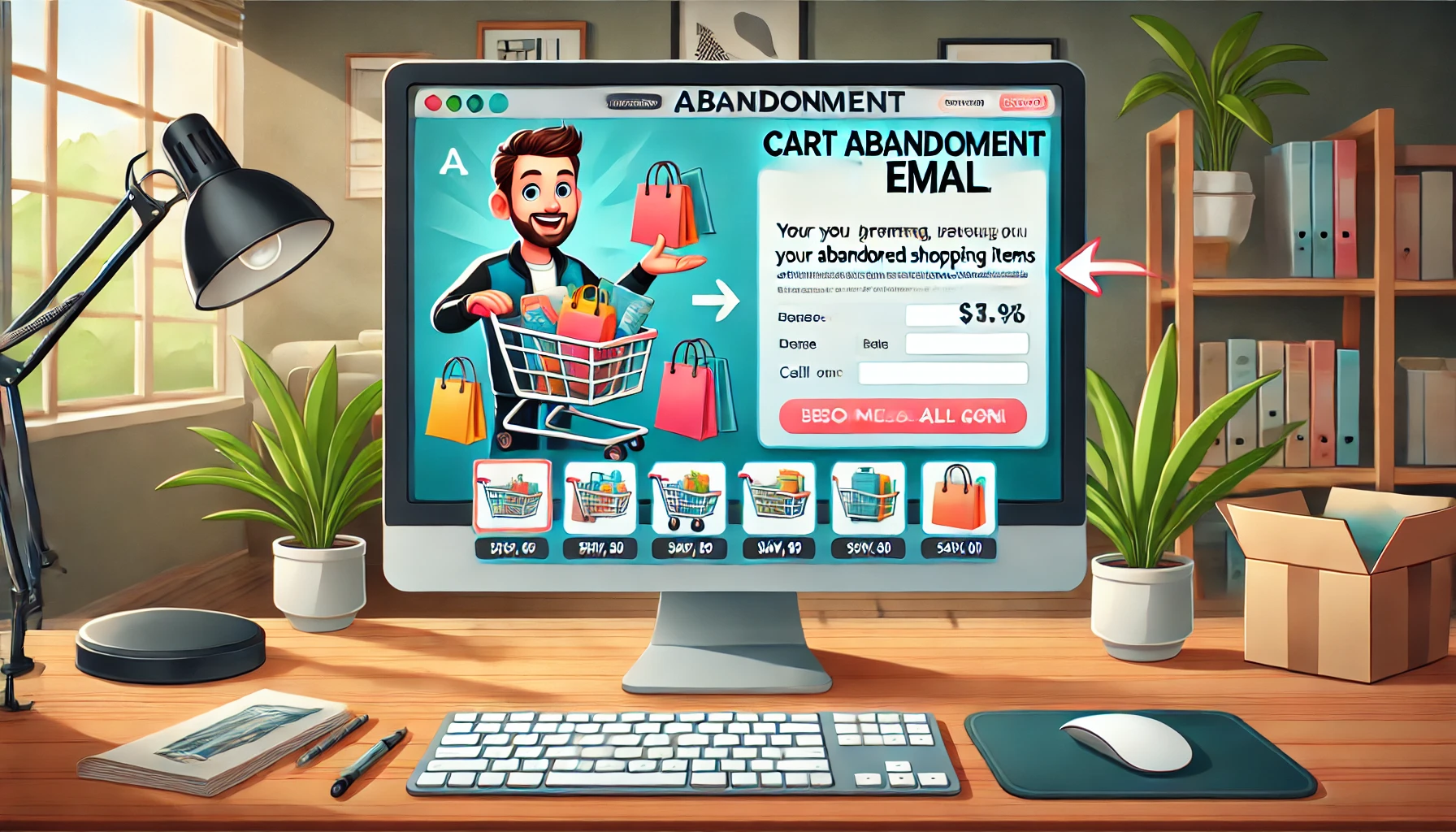Email is one of the most common ways we communicate digitally, especially in business. When it comes to marketing, email is incredibly powerful. Many companies are discovering just how crucial email marketing is.
According to a 2019 study by DMA, email marketing delivers the highest return on investment (ROI) of all marketing channels, giving back $42 for every dollar spent. But to make the most out of each email, it needs to be well-crafted and unique. Some companies prefer to hire firms specializing in email marketing services, while others handle it themselves.
Understanding the key elements of an email’s envelope and body content helps you create personalized emails that hit the mark.
Curious about the anatomy of an email? Here’s a full breakdown.
What Makes Up an Email?
To grasp how an email functions, you need to understand its parts. There are two main components of an email:
- Envelope: This is what you see in your inbox before opening the email. It includes the subject line, sender name, and preview text.
- Body Content: This is the main message of the email, which you read once you open it.
Using email testing tools can help you check out email templates and easily identify these parts.
Breaking Down the Email Envelope
There are tons of different emails out there, like promotional emails, personalized messages, welcome emails, and more. But no matter what kind of email you’re sending, the first big challenge is getting the recipient to actually open it, especially if it’s a cold email. People look at the envelope content to decide if they should open it or just toss it in the trash or spam folder.
The exact details can vary depending on the email client, but most of them will show:
- Subject Line: The main headline that grabs attention.
- Preview Content: A sneak peek of the email’s content.
- Sender’s Logo: The brand or company logo.
- Date: When the email was sent.
Let’s dive into each of these components.
The Subject Line
The subject line is the first thing people see when they get your email. It’s like your one-sentence pitch that tells them why they should open it. So, how do you make your subject line pop? Here are some tips:
- Create Urgency: Make it seem like they need to act fast. For example, a clothing store could say, “24-Hour Flash Sale – Don’t Miss Out!”
- Address a Pain Point: Talk about a common problem your audience faces and hint at your solution. Like, “Struggling with Back Pain? Here’s How to Fix It.”
- Grab Their Attention: People are naturally curious. Use something funny, intriguing, or surprising to get them interested. For example, “5 Shocking Facts About Your Morning Coffee.”
- Avoid Click-Bait: No one likes feeling tricked. Don’t promise something too good to be true. If it feels like click-bait, people will probably ignore it.
How can you tell if your subject line works? The easiest way is to see if people are actually opening your email. A/B testing can help you find the best subject line. (Check out the section “A/B Testing: What is it and Why Use it?” below for more details.)
Preview Content
Some email clients show a preview text right after or below the subject line. This little snippet can be another chance to persuade someone to open your email. Here are the common types of preview content:
- Schema: This coding highlights a specific part of the email body as the preview.
- Preview Text: The most common type, usually pulled from the first HTML text in your email, often from the preheader text.
- Email Annotations: Some email clients let you add images or deal badges in the preview content.
Again, this is a quick chance to grab the reader’s interest. Make sure the beginning of your email is short and to the point.
Logo
Some email clients let you add your logo in the email annotations, so it shows up next to your sender name along with the message. Including your logo here also places it in your email signature. Even if your brand isn’t very well-known, having a logo can make your business look more legitimate and professional.
Date and Time
Did you know there are specific times of the day and week when people are more likely to open emails?
Here are some general rules you can follow:
- Weekdays over Weekends: People are more likely to check emails during the workweek.
- Mid-day is Best: Emails sent in the middle of the day usually get more attention than those sent early in the morning or late at night.
- Avoid Friday Evenings: Emails sent on Friday evenings are often ignored as people start their weekends.
But instead of just following these general rules, it’s even better to choose your send times based on detailed customer data. By looking at when people clicked, opened, and responded to your past emails, you can figure out the best times to reach your specific audience.
Breaking Down Email Body Content
Now that you’ve gotten the recipient to open your email, it’s time to focus on the body content. This is where you make your case—whatever it might be. Just like the envelope, the body content can be divided into a few key elements:
- Header
- Hero Content
- Footer
The Header
The header always comes before the main content. It includes important details like the sender, recipient, date, subject line, and the HTML header. Many people overlook the header, missing out on prime space for essential marketing or branding info. But it’s a great spot to set the tone, especially if you include your company logo or an anchor link menu.
Here are some tips for creating a good header:
- Make it Brand-Identifying: Ensure the reader knows who is sending the email.
- Versatile Header: Design it to work with all types of email campaigns.
- Keep it Streamlined: This should be a quick bite, not the whole meal.
Hero Content
The hero content is the star of your email. It’s the main message that you hinted at in the envelope. This is usually the longest section of your email.
But remember, you don’t want to write a novel. Stick to one central theme or idea. For image-heavy emails, aim for about 50-100 words. For text-heavy emails, 100-200 words is a good range.
When writing your hero content, keep sentences short and to the point. A clear, concise message is more effective. Whether you’re promoting a sale, updating customers on new products, or trying to convince another company to partner with you, make sure your message is easy to digest.
The Footer
A footer is made up of HTML text and can include a variety of elements. Some of these are optional, while others are legally required. Common footer elements are:
- Unsubscribe Link: Allows readers to opt out of future emails.
- Legal Disclaimers and Offer Exclusions: Important legal information related to your email content.
- Statement of Permission: Confirms that the email was sent with the recipient’s permission.
- Copyright Notice: Protects your content legally.
- Postal Mailing Address: Your business’s physical address.
- Preference Center Link: Lets readers manage their email preferences.
The key to a good footer is balancing legal requirements with readability. Only include what’s necessary and relevant to your audience. This way, you stay compliant without overwhelming your readers with too much legal jargon.
Understanding A/B Testing and Its Benefits
A/B testing is a handy marketing tool where you compare two versions of an email to see which one performs better. To do this, you create two nearly identical emails and change just one element.
Usually, the subject line is what gets tested the most.
In simple terms, A/B testing takes the guesswork out of figuring out which subject line is more effective. Instead of relying on gut feelings, A/B testing gives you solid data to make your decision. As Harvard Business Review points out:
“It’s all about data these days. Leaders want evidence before making decisions, and there are many ways to gather information without relying solely on instincts. One common method, especially online, is A/B testing.”
Let’s say a toothpaste company is marketing directly to customers (B2C). One subject line says, “Get the Whitest, Pearliest Smile in Town” – it sounds fun and catchy. Another subject line is, “Need Toothpaste? We Sell Toothpaste” – it sounds plain and boring. When you do A/B testing, you find that the boring subject line gets a 57% open rate, while the catchy one only gets 23%.
In this case, you’d go with the data and use the boring subject line because it worked better.
In the past, marketers often relied on their instincts, thinking catchy always meant better. But now, A/B testing gives us clear answers.
Remember, A/B testing isn’t just for subject lines. You can test the opening line, the closing line, the body content – pretty much anything in your email. The more you A/B test, the closer you get to perfecting your messaging.
Conclusion
When done right, email marketing can deliver amazing results without costing a lot. To achieve this, you need to understand and address the key elements of an email’s structure.
Need help optimizing your email campaigns and crafting the perfect message?
You’ve come to the right place.
At Tribal Pearl Media, we specialize in email composition and SEO, among many other marketing strategies. With a few smart tweaks and additions to your email strategy, we can help you boost clicks, conversions, and sales.
FAQs
1. What is A/B testing in email marketing?
A/B testing is a method where you compare two versions of an email to see which one performs better. You change one element, like the subject line, and send both versions to different segments of your audience to find out which one gets more opens or clicks.
2. Why is the subject line important in an email?
The subject line is crucial because it’s the first thing recipients see. A good subject line grabs attention and convinces people to open the email, which is the first step towards getting them to engage with your content.
3. What elements should be included in the header of an email?
The header should include the sender’s name, recipient’s name, date, subject line, and sometimes a logo or branding element. It sets the tone for the email and provides essential information at a glance.
4. How can I improve my email’s open rate?
Improving your email’s open rate can be achieved by writing compelling subject lines, sending emails at optimal times, and making sure your sender name is recognizable. Personalizing your emails and A/B testing different strategies can also help.
5. What is the role of the footer in an email?
The footer includes important information like unsubscribe links, legal disclaimers, and your company’s contact details. It helps you stay compliant with regulations and provides readers with essential info.












